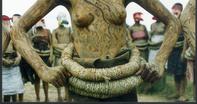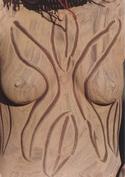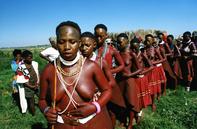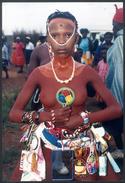Like the production of grass masks, the art of body painting is associated with important ritual occasions. A white clay substance called phepa is applied to the bodies of South Sotho initiates at the end of the initiation period.

Said to signify the end of their humble silence and the beginning of more interaction with members of the community, the decorative motifs drawn on the bodies of the initiates reflect the fact that they have now made themselves visible to the community.



Letsoku consist of ochre and water. Although today many families purchase commercially packaged ochre, in the past women excavated ochre before burning it in a fire to achieve a deep red hue.
The addition of fat to the finely ground ochre helps to soften the wearer’s skin, which usually becomes very dry while covered in the abrasive phepa associated with.
By Professor Sandra Klopper